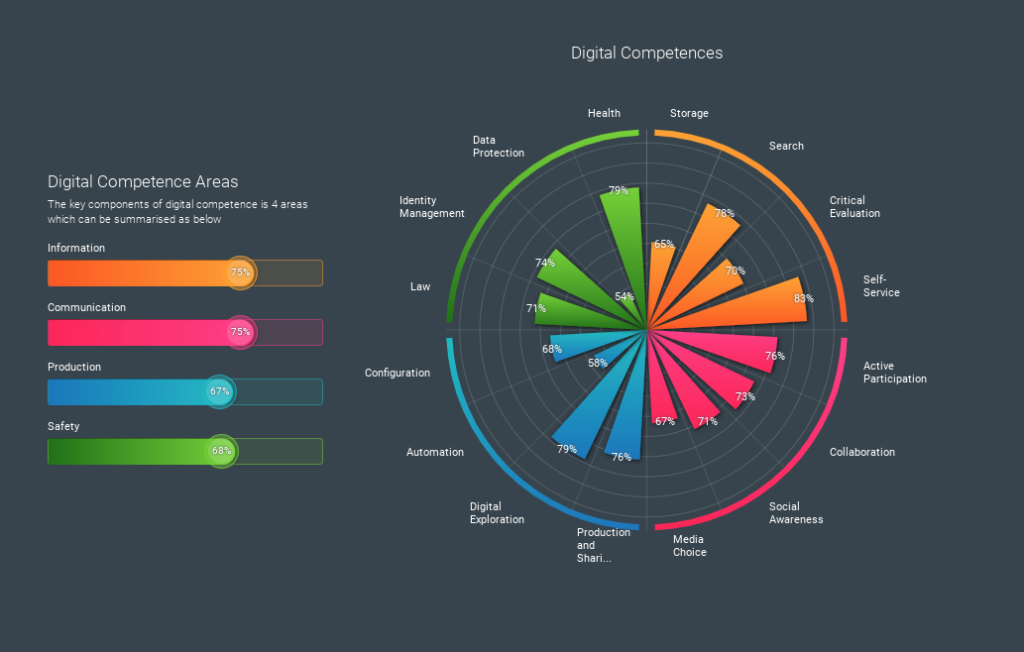Kela
Kela, or the Social Insurance Institution of Finland, offers many services. In fact, Kela has a lot of services that people are not even aware of. You just need to know where to look. I don’t visit Kela’s website very often, but I do use the pharmacy’s direct reimbursement for medications with my Kela card. The last time I used Kela’s website was to pay the student health care fee, and before that, I handled an issue regarding my child’s school transport subsidy. In 2024, it will be time to help my child fill out a student financial aid application when the child allowance from Kela ends. Our whole family has had the European Health Insurance Card for years. The card occasionally expires, but it’s great service when the new card is always mailed home without having to worry about it.
OmaKanta
I personally use the OmaKanta service fairly often. It’s good that the service uses strong identification, whether with a certificate card, mobile certificate, or bank credentials. If I’m at work, I use the certificate card for identification, and in my free time, I prefer using the mobile certificate because of its convenience. The OmaKanta service is easy to use despite some small inconsistencies. Unfortunately, many find the service difficult, mainly because they cannot locate their information. Some of the problems stem from the user, while others result from delays or missing data due to doctors not finalizing their input.
Keva
At the moment, my estimated retirement would start at age 67 in 2048. The amounts shown by the pension calculator are not large. If one were to work until 70, the monthly amount increases slightly, but it’s still not worth pursuing, even if one is able to work longer. There’s still over 20 years until my current estimated retirement age, and likely the retirement age will be pushed further as the years go by. People are healthier now than they used to be. On the other hand, the big question is, who will pay pensions in the future when the tax-paying age groups are shrinking?
Online Shopping
Online stores have sprung up at an accelerating pace in recent years. The number of consumers using online shopping has also grown quickly. The COVID-19 pandemic further boosted online grocery shopping. Some consumers do not trust online stores, especially foreign ones. Personally, my trust in Finnish online stores has been affected mostly due to issues with the postal service. That’s why I prefer foreign online stores. Being price-conscious is a good skill when browsing any digital store. It’s also wise not to let price blindness take over, especially when ordering from abroad. It’s important to check where the order is coming from, as there’s a chance the package could get held at customs. In such cases, even a cheap order can become expensive when VAT and possible customs duties are added.
EBay is a well-known online marketplace platform. It’s important to note that some sellers are private individuals, while others are businesses. When browsing products, in addition to a low price, it’s essential to check where the product is being shipped from. Before purchasing, you should also find out how much the shipping costs will be. For example, shipping from the United States is very expensive and will almost certainly be held at customs regardless of the purchase amount. A challenge with the platform is handling complaints, as some transactions are between two private individuals.
Amazon is a well-known and reliable online store. It has been in operation for years, and in my opinion, it is considered trustworthy. When ordering from Amazon, it’s good to note which country’s Amazon store you’re ordering from. Regardless of the country, the site clearly indicates if the product you’re purchasing cannot be delivered to Finland. In Finland, many people use Amazon Germany due to the affordable products and the low-cost, fast delivery. The site also has clear instructions for complaints, returns, shipping costs, and more.
Trivago‘s advertising is quite visible, for example, on television, where it clearly emphasizes affordability. When using Trivago, it’s important to be price-conscious, especially when booking a hotel room in Finland. Often, booking directly from the hotel turns out to be cheaper, even though Trivago’s advertising suggests otherwise. Many hotel chains offer good deals on their own websites. Additionally, booking through Trivago can lead to issues with cancellations or changes to the reservation. Not everyone using the service understands this. I don’t think the site provides enough clear information that if a room is booked through Trivago using a service platform, cancellations or changes may not be possible directly by calling the hotel.
Terveysportti.fi
Since I work as a radiographer, I’m familiar with using the Terveysportti website. A good description of its content can be found on its own pages: “Terveysportti simplifies and speeds up the daily work of healthcare professionals by providing all the necessary medical information in one place.” At first, the website seems quite confusing, but with frequent use, information becomes easier to find. Some information and functions, such as the “Käypä hoito” (Current Care Guidelines) are freely available. However, some features, like the Oppiportti service, are only available with healthcare center or educational institution login credentials. All the information on the site is certainly reliable because it’s maintained by a trustworthy source. I personally recommend Oppiportti to radiographer students due to its good online courses and learning materials.
Digitalization and the Digital Divide
The digital divide refers to inequality that arises between people who can benefit from and use the advantages of digitalization and those who cannot. The reasons for this inequality range from skills, access, and financial factors. The challenges and risks of this divide include social exclusion, economic inequality, and access to services. Personally, I see social exclusion and access to services as the biggest problems. Not everyone has the skills or opportunities to use digital services, which leads to situations where people are unable to take care of certain matters. Nowadays, almost all agencies, banks, and other public institutions primarily operate via digital services. This puts people at a real disadvantage when there is no longer an option to handle matters face-to-face. Those who cannot afford devices to use digital services risk becoming even more isolated because they can’t apply for housing, benefits, or manage their banking. The limited opening hours of agencies and banks make handling these issues difficult. A few years ago, I was briefly unemployed, and I felt like I was treated as if my unemployment was my fault. Now, I think that with the reduced opening hours of offices, the unemployed and those already somewhat marginalized are being mistreated and discriminated against by society. Everywhere the response seems to be: “It’s available online. Fill it out and submit it there.”
This is my Digital Competence Test result.

Self-Evaluation
I have often thought about the inequality caused by digitalization, and everyone I’ve discussed it with agrees that the digital divide significantly increases inequality. This task made me reflect once again on how fortunate I am to have kept up with the development of digital services and to be able to use them in my everyday life. It also made me think about how much the operations of agencies and banks have moved online. I use online stores a lot for shopping, both from Finland and abroad. In the future, I may need to pay more attention to data security and the information that sites collect about me. I think everyone has experienced a situation where you discuss a topic with a colleague during a coffee break, and shortly after, your phone browser starts showing ads about that topic. So, it’s not just about computers and phones saving your search history, but they are also interested in your conversations.
I commented these three blogs:
Minna Pylkkänen https://blogi.savonia.fi/minnapylkkanen/digi-citizen/
Minna Teiskonen https://blogi.savonia.fi/mintei/orientation/
Anu Kainulainen https://blogi.savonia.fi/anukainulainen/digi-citizen/

